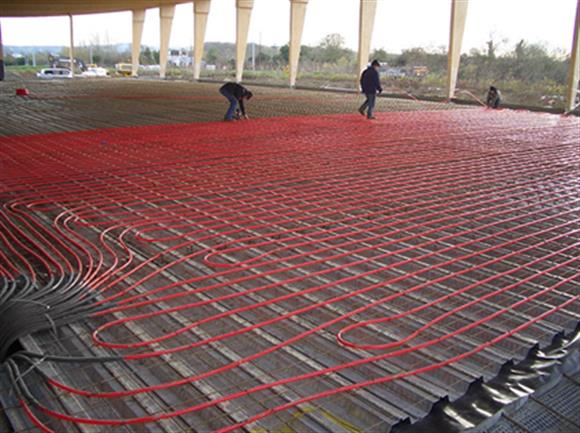The hydronic underfloor heating market is anticipated to develop from its anticipated US$ 4,390.4 Million in 2023 to US$ 8,012.2 Million by 2033, expanding at a 6.2% CAGR. The growing need for cost-effective heating choices, as well as government incentives and assistance for their adoption, will influence the market potential for hydronic underfloor heating.
The COVID-19 pandemic has had a negative effect on the hydronic underfloor heating sector.
In order to effectively stop the pandemic’s spread and reduce infection risk, hydronic underfloor heating systems, which may be the source of microbial contamination in enclosed spaces, have reduced the market’s growth.
Due to their strict building codes, adaptability, and high level of comfort, heating systems will become more and more popular. Furthermore, the market adoption trends for hydronic underfloor heating will be influenced by the expansion of energy efficiency standards as well as growing environmental concerns.
Maximize Your Industry Knowledge: Dive Deeper with Our Sample Report Insights
https://www.futuremarketinsights.com/reports/sample/rep-gb-15063
The market will be driven by elements like the low maintenance required by electrically heated systems, the adaptability of floor heaters, the freedom in system design, and the simplicity of installation.
Hydronic underfloor heating solution providers should see more opportunities on the market as a result of technological and digital advancements. Digitalization in the market is being fueled by the quick uptake of hydronic underfloor heating and other high-tech goods and services like smart metres, demand-based heating systems, home automation, smart buildings, smart infrastructure, and so forth.
By utilising hydronic underfloor heating options, consumers can actively contribute to balancing future heating needs. Rapid technological development lowers heating costs while raising system effectiveness, which favourably impacts key market trends and opportunities.
Restraints in the Hydronic Underfloor Heating Market
The initial costs and installation process may be challenging because they will be constructed beneath the flooring. As a result, they hinder the adoption of hydronic underfloor heating by requiring a lot of labour and specialised personnel to install the entire system.
Systems for hydronic underfloor heating are challenging because hot water is transported through numerous pipes. Even though the hydronic system has a number of advantages over other hydronic underfloor heating systems, installing it is a significant hurdle.
They operate at a lower temperature than radiators, which warm the air. The space is heated more slowly by them. By allotting time to start the healing process, which will affect the market’s key trends and opportunities, this issue can be avoided.
Challenges are to be Faced by the Hydronic Underfloor Heating Market
Depending on the type of floor, different hydronic underfloor heating systems are available. Concrete floors require the use of high-capacity hydronic underfloor heating systems, whereas wooden floors call for the use of low-capacity heat pumps. Only engineers with experience in hydronic underfloor heating can comprehend this requirement.
Although heating mats for a particular area of the house are readily available, it will take some time before businesses introduce DIY systems for an entire house, which is seen as a great opportunity.
Thermostats, manifolds, heat pumps, and boilers are just a few of the components that make up hydronic underfloor heating systems.
The overall performance of a hydronic underfloor heating system is affected by minor problems with heat pumps and boilers, which has an impact on the demand for hydronic underfloor heating.
Hydronic underfloor heating systems need routine maintenance, which should only be carried out by qualified hydronic underfloor heating engineers. The hydronic underfloor heating market has faced significant difficulties as a result of the need for ongoing maintenance of each component.
Trends in the Hydronic Underfloor Heating Market
The residential application is anticipated to hold a sizable market share due to the increased emphasis on demand-based heating solutions.
The product’s ability to outlast other combustion-based heating systems while offering affordable, effective heating to buildings will boost demand for hydronic underfloor heating in residential applications, which will in turn boost sales of the technology.
The main market players are concentrating on enhancing production capabilities and product innovation, which is boosting market opportunities.
Unlock Exclusive Market Segments Insights: Buy Now to Discover Vital Trends, Drivers, and Challenges in this Industry
https://www.futuremarketinsights.com/checkout/15063
Key Segments
Market, By Facility:
- New Buildings
- Retrofit
Market, By Application:
- Residential
- Single-family
- Multi-family
- Industrial
- Commercial
- Education
- Healthcare
- Retail
- Logistics & Transportation
- Offices
- Hospitality
- Others
Fragmented:
- Robert Bosch GmbH
- Pentair PLC
- Mitsubishi Electric Corporation
- Emerson Electric Co.
- Schneider Electric SE
- Siemens AG
About Future Market Insights (FMI)
Future Market Insights, Inc. (ESOMAR certified, recipient of the Stevie Award, and a member of the Greater New York Chamber of Commerce) offers profound insights into the driving factors that are boosting demand in the market. FMI is the leading global provider of market intelligence, advisory services, consulting, and events for the Packaging, Food and Beverage, Consumer Technology, Healthcare, Industrial, and Chemicals markets. With a vast team of over 5,000 analysts worldwide, FMI provides global, regional, and local expertise on diverse domains and industry trends across more than 110 countries.
Contact Us:
Future Market Insights Inc.
Christiana Corporate, 200 Continental Drive,
Suite 401, Newark, Delaware – 19713, USA
T: +1-845-579-5705
For Sales Enquiries: sales@futuremarketinsights.com
Website: https://www.futuremarketinsights.com
LinkedIn| Twitter| Blogs | YouTube

